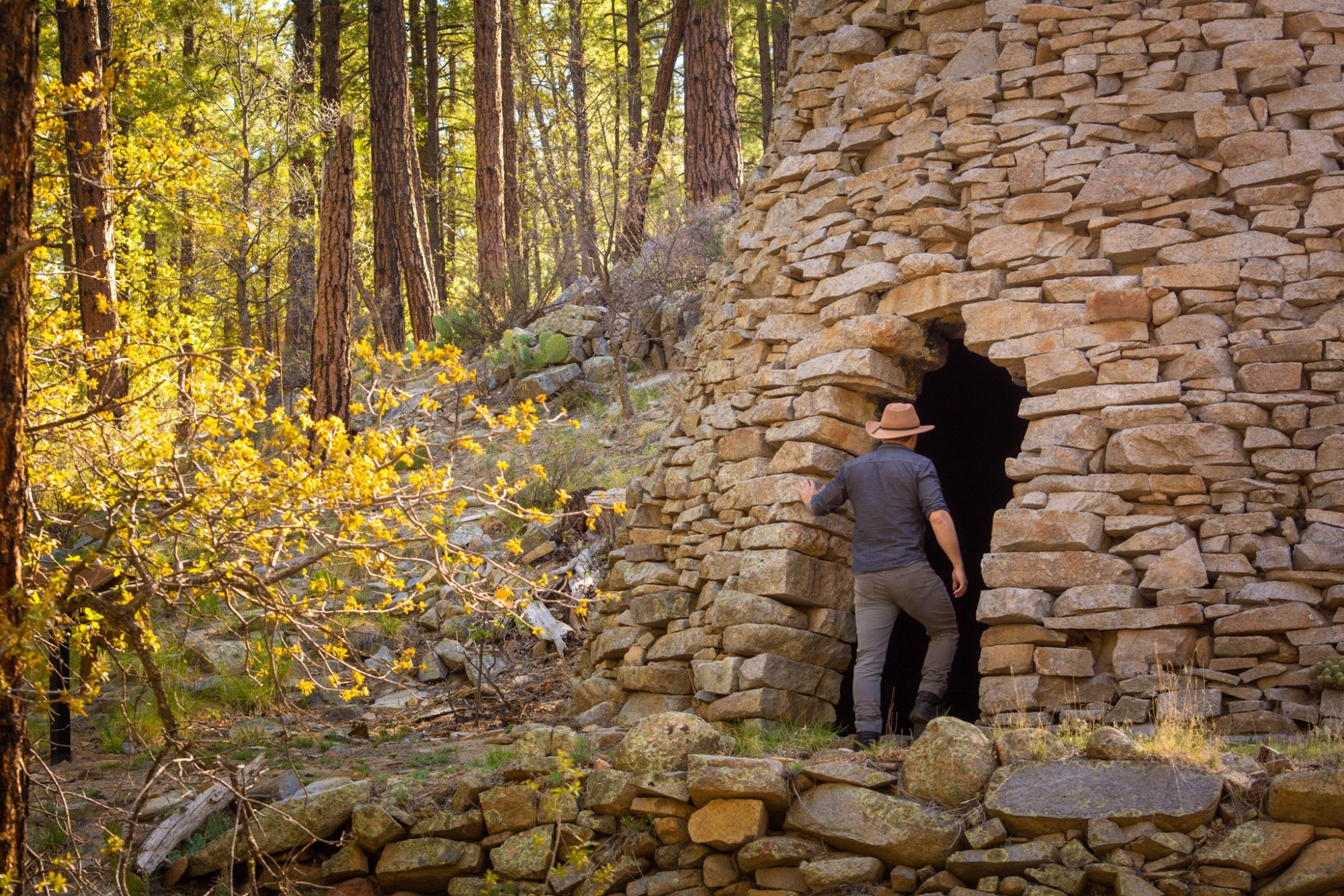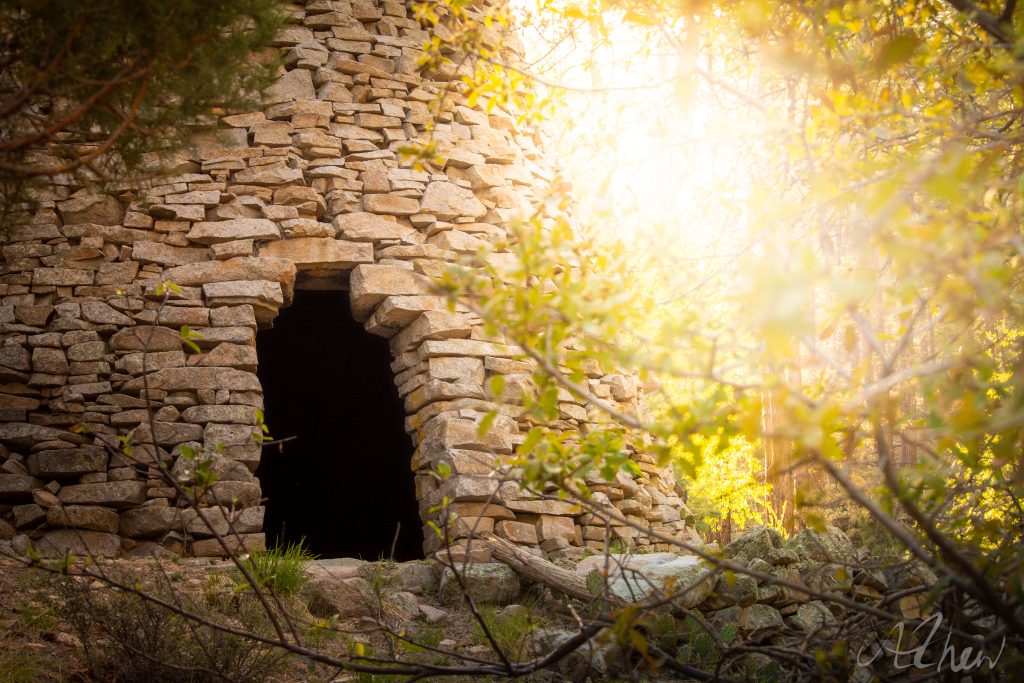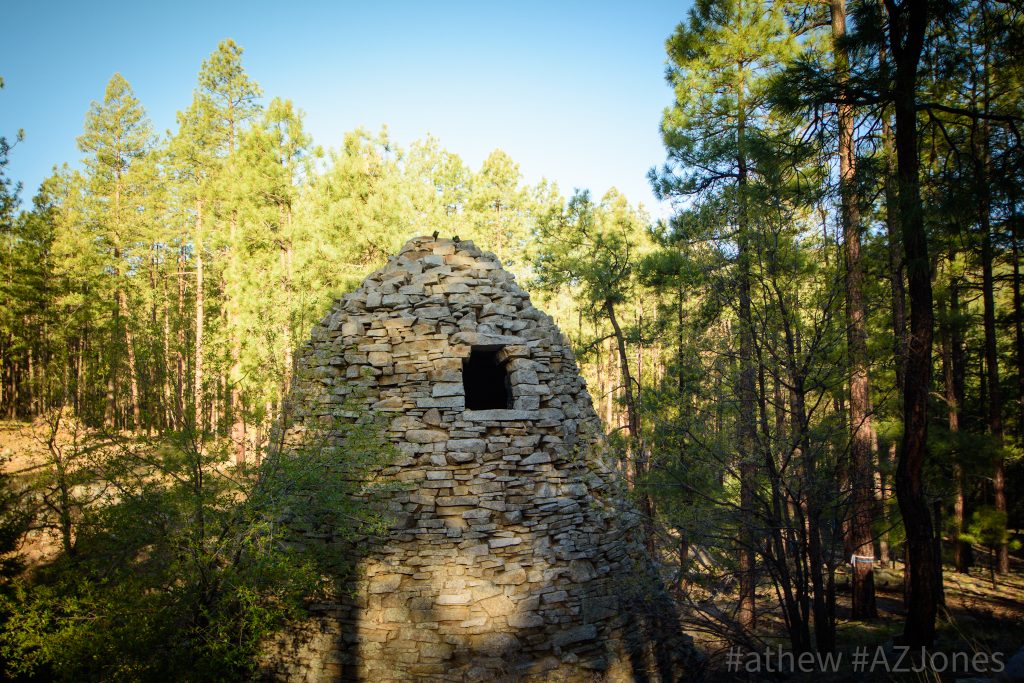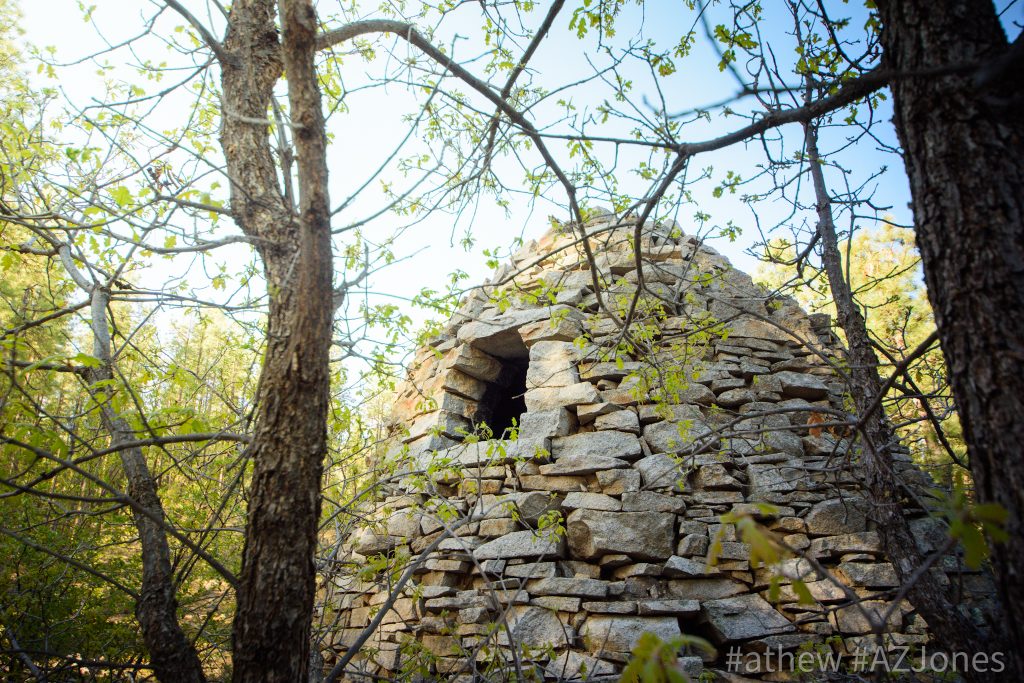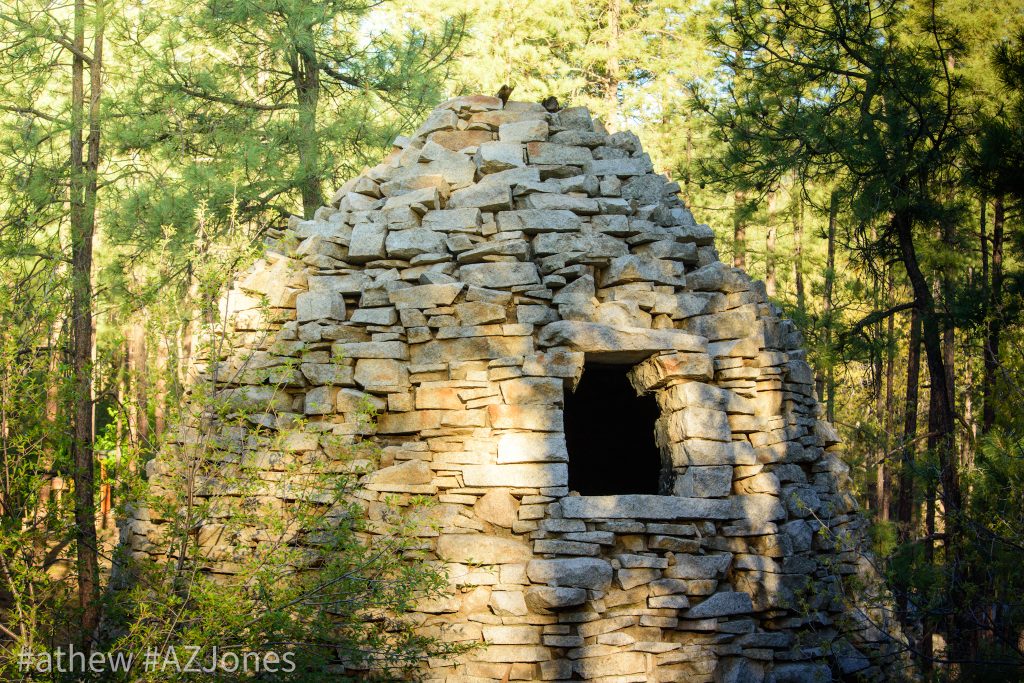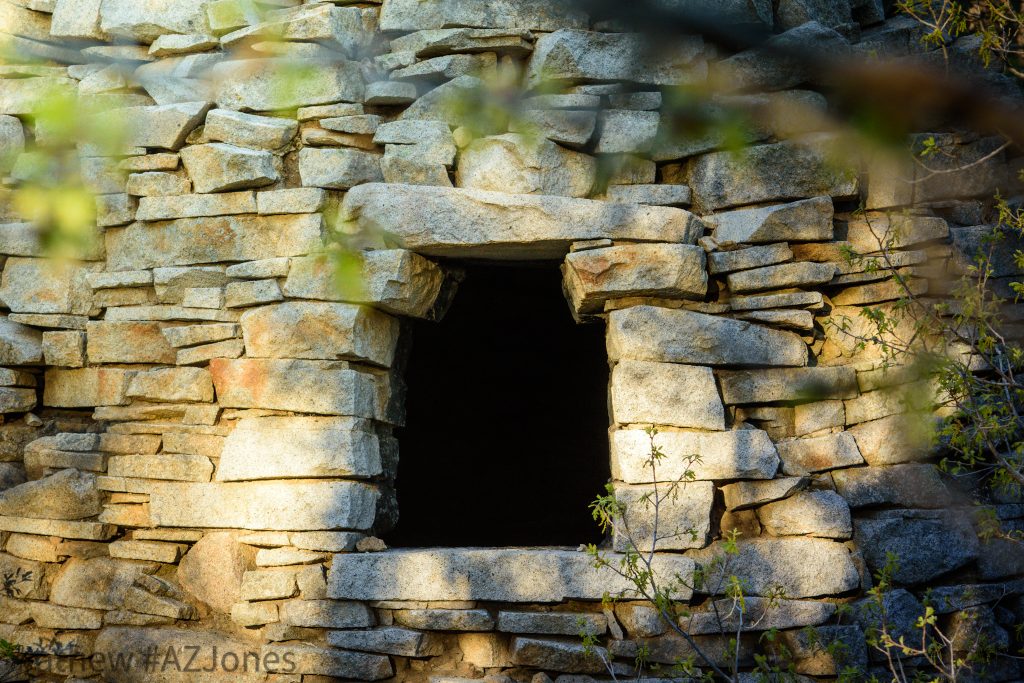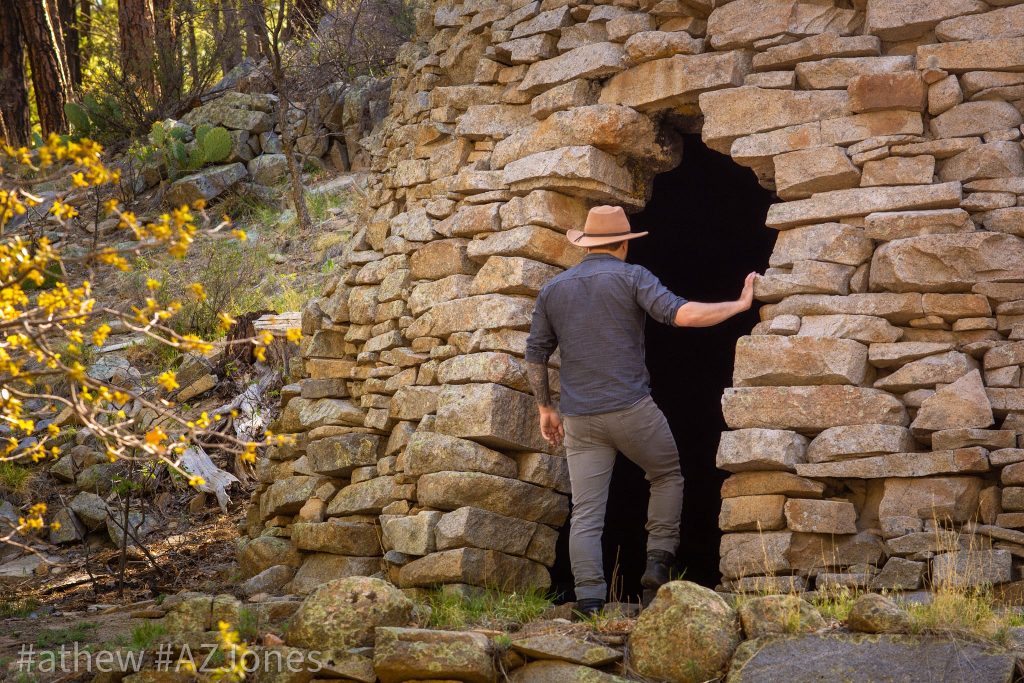In a small town outside Prescott, Arizona, a monolith to a bygone era stands proudly amongst the pine and summer homes.
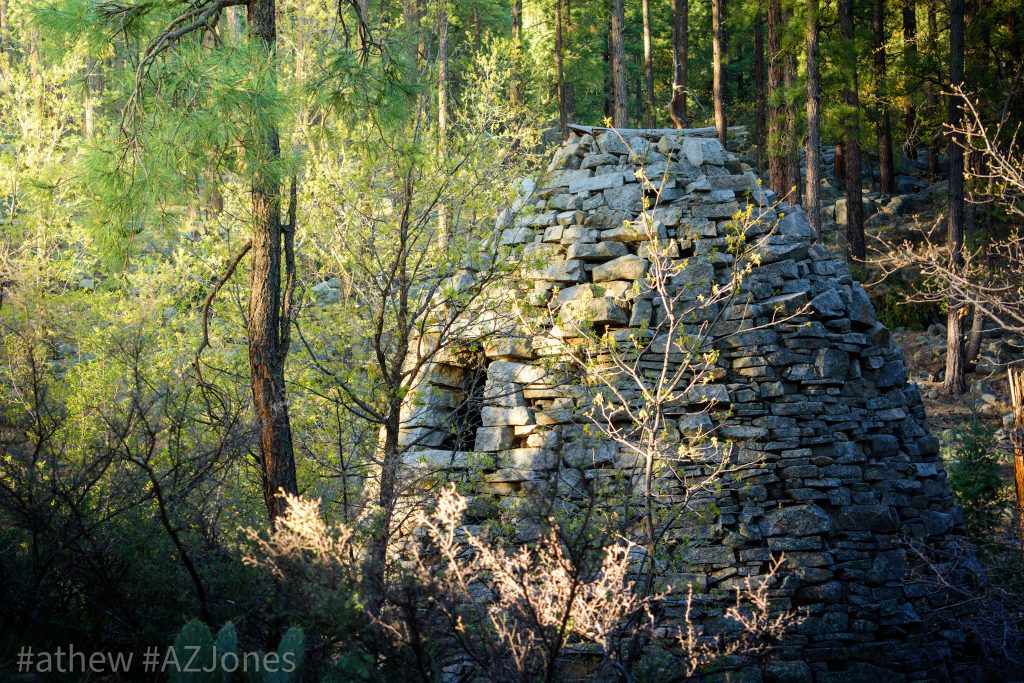
Created around the year 1880, by Jake and Joe Carmichael, this kiln was used to convert oak wood into charcoal to be used in the smelting operations of a nearby silver mine.
Using a ramp to access the window on the backside, workers would carry and deposit their loads of oak inside the kiln (seen in illustration). When the process of oak-to-charcoal was complete, it would be removed through the door on the front side, then hauled to the mine.
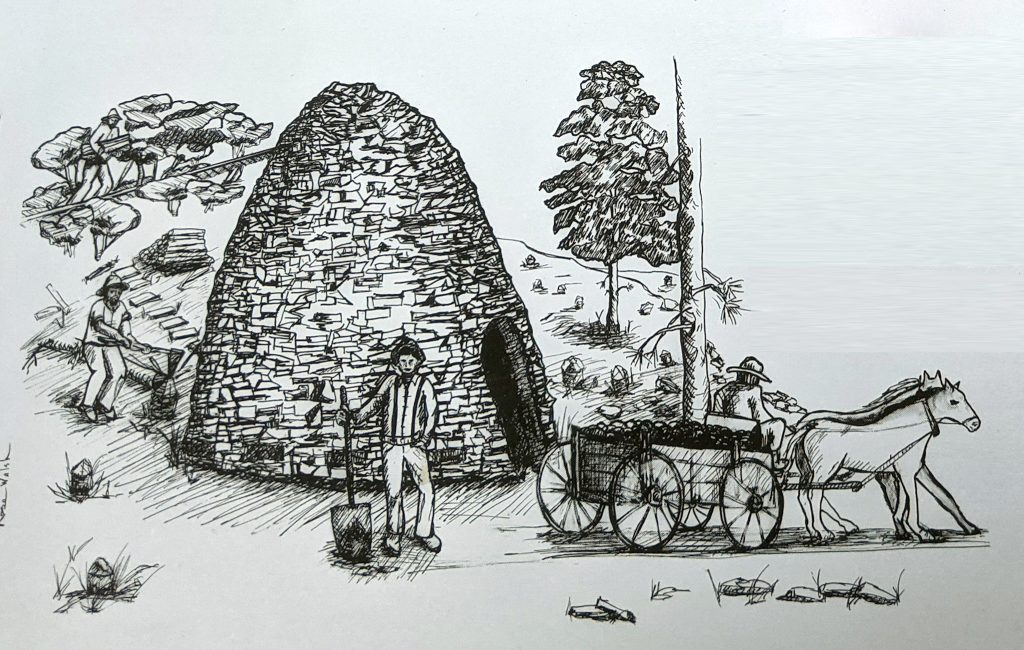
Charcoal is created by removing all moisture from wood—the result is a burning agent with twice the heat. The process is no simple thing, however, and would require skilled colliers to help facilitate a successful conversion. The industrial size (around 20 ft tall) and shape of the kiln allowed for greater control over heat and gas. The domed shape of the roof, for example, would carry the rising heat once more over the baking wood before exiting through a narrow opening in the ceiling. A typical kiln of this time would have small openings in the brickwork, to close and reopen manually, to help raise or lower internal temperatures. If the wood burned too fast or too slow, or if internal gases were not maintained, explosions could result, or a useless pile of ash. A single cord of wood could produce up to 40 bushels of charcoal.
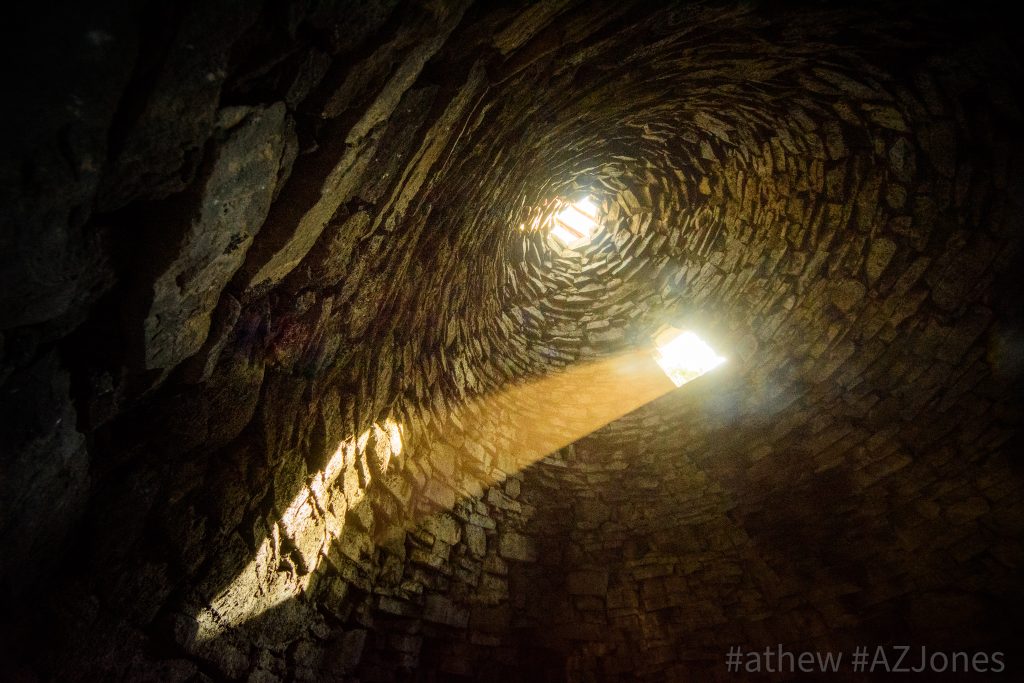
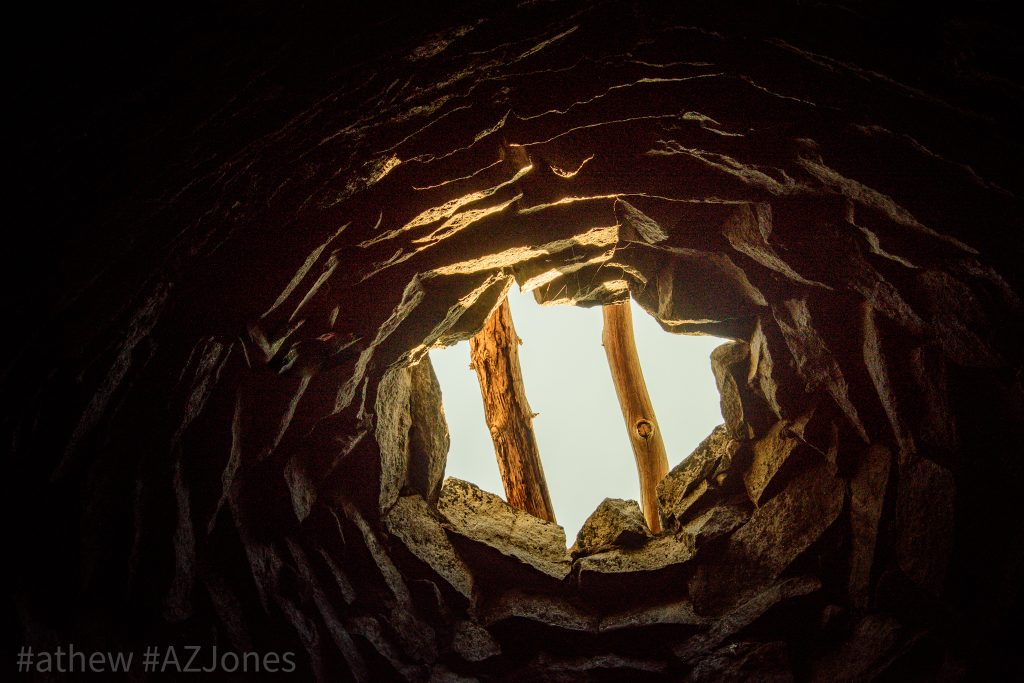
Hard rock mining is difficult, and the charcoal produced from this kiln played an important role in the success of the Walker district, which was among the most important and efficient producers of precious metals at the time, in the State of Arizona. The Walker Charcoal Kiln is special, not only for its history, but also for being the only surviving kiln in the area, and one of the oldest mining monuments in Yavapai County. It found its way into the National Register of Historic Places in 1976.
For nearly 80 years, Walker was sustained through its mining operations but suffered a major decline in 1893 when silver became demonetized and no longer stabilized by the U.S. government. The local economy suffered greatly. Walker, once having been an industrious and booming town, with a population of up to 3,000 at its peak, with restaurants, a barber, hotel, and all the amenities one might expect of a mining town of the time, went bust!
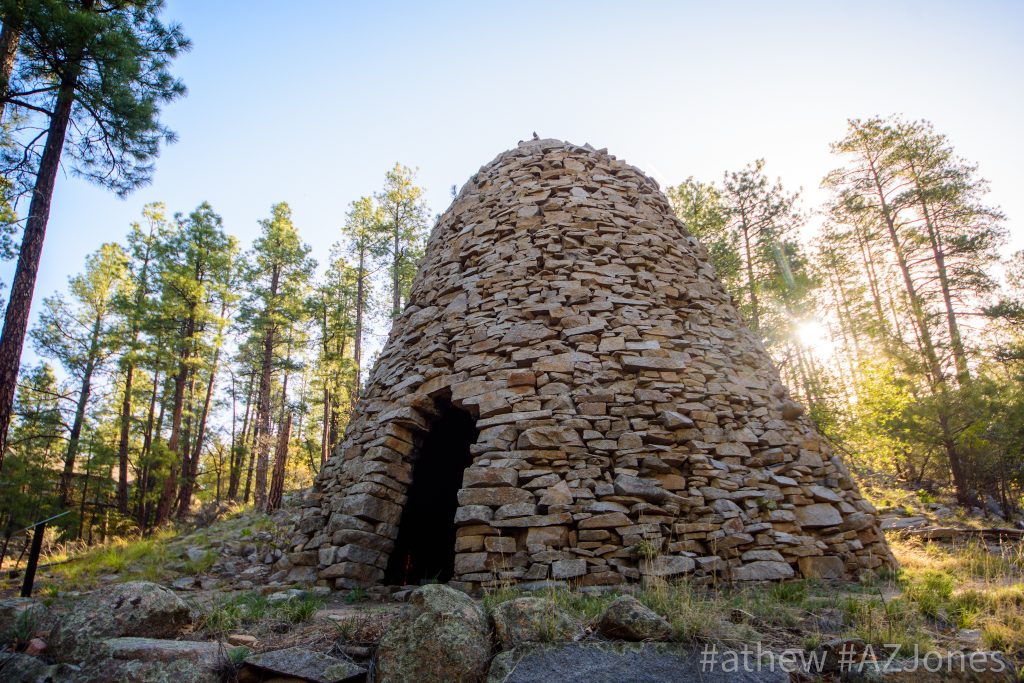
Today, the town of Walker is much quieter, but still kicking. In fact, the kiln itself is surrounded by 3 different cabins, in a quiet neighborhood. If you decide to visit this incredible piece of history for yourself, remember to be respectful—not just of the history, but of those who live here. Keep your voices low, and your groups small.
I hope you enjoyed that read! To stay up-to-date on all things Arizona Jones, be sure to subscribe to my weekly newsletter! And, if you like my work, please support me, by visiting my online store, and sharing my articles on your preferred social media!

